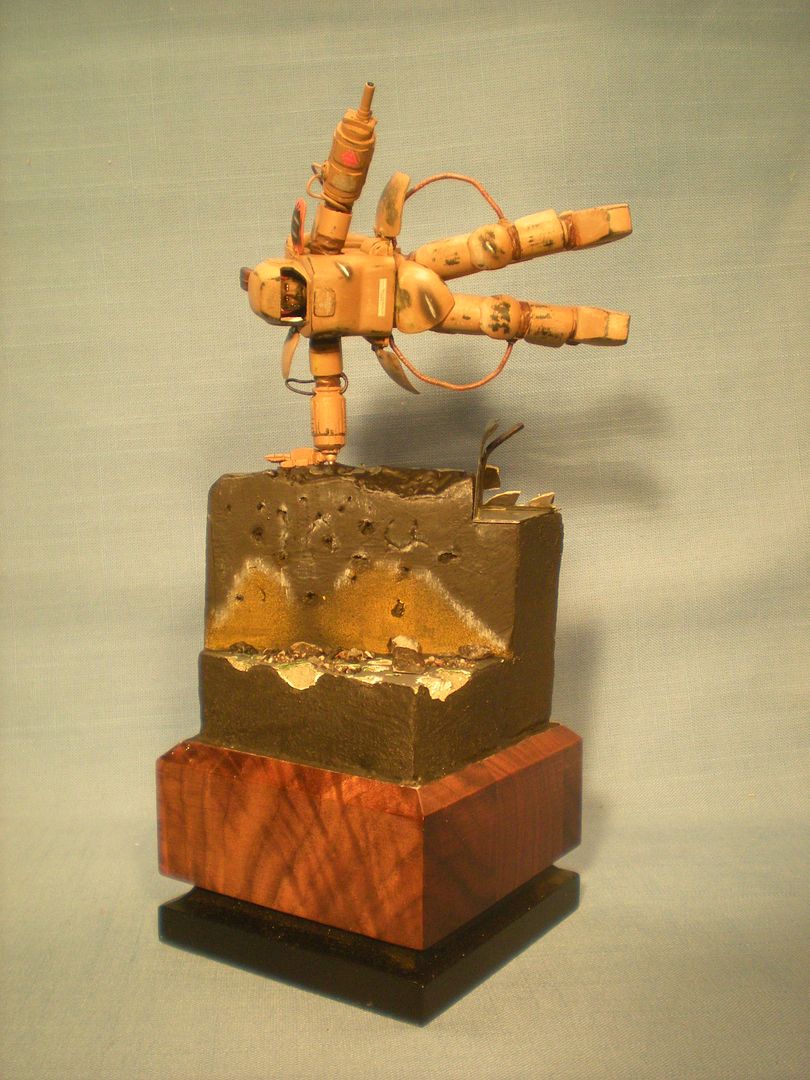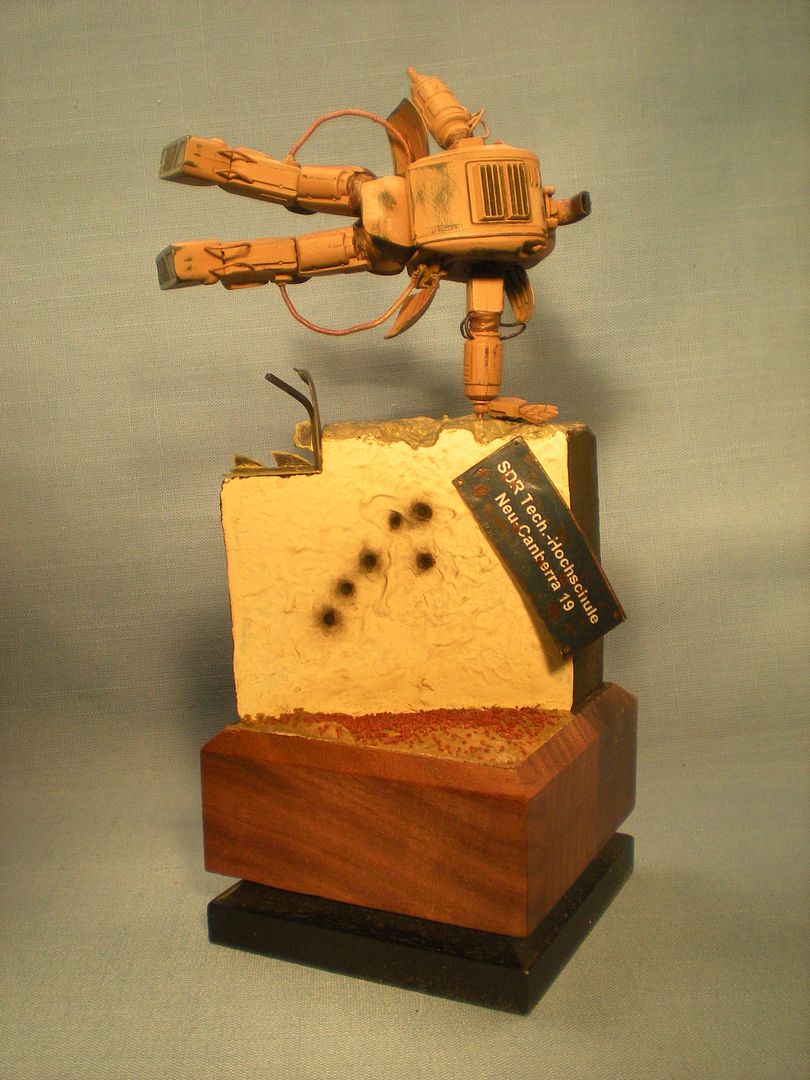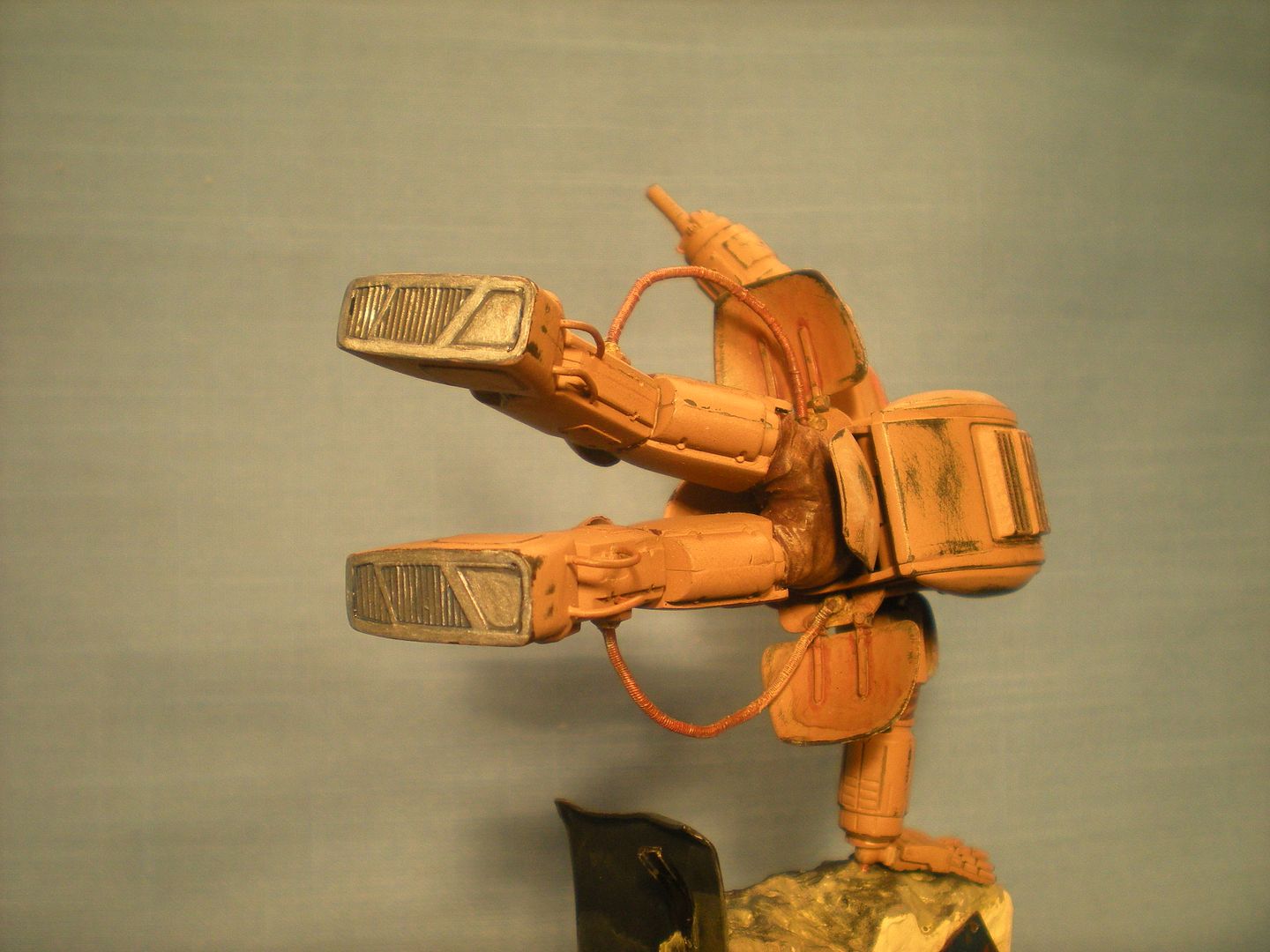A couple of years ago, my buddy Hershbell got me interested in Maschinen Krieger, giving me a Raptor from his stash. This is my second completed MaK kit, the old Nitto Mk 1 AFS (Armored Fighting Suit)
I started this in December 2013, and worked on it, off and on. Not that it was a difficult kit, but I would hit roadblocks and stop till I thought my way around them.
One thing that I wanted to do was to depict the suit in a more animated pose than is usual for MaK subjects. The armored suits remind me a lot of the Mobile Infantry in Robert Heinlein's "Starship Trooper", and I picture the suits as enhancing the pilot's movements. A weapons system that makes it harder to fight would tend to lead to a dead pilot.
Another thing that I wanted to do was to modify the kit's pilot head. I originally sculpted a crash helmet, didn't like it, and then got the idea to make the pilot a Sikh. In this, I thought of David Drake's Hammerverse, with mercenary units reflecting various countries and ethnicities from old Earth. Why not a Sikh battalion, fighting with the mercs against the SDR in the MaK world?
Anyway, here's the finished product:


and a couple of close-ups:


I hadn't intended to leave off the face shield, but I found that it didn't fit the helmet. Not that it's a hair to wide here or there--it's not shaped right.
I also experimented in this build with using a hard enamel primer as a base for chipping and scraping with a Scotch Brite pad for weathering. I used Army Painter matte black, which is an excellent, hard primer. But then I made the mistake, without even thinking, of grabbing the only sand color I had on hand, which was an enamel. Needless to say, the 3M pad would not scuff the paint a bit, and I wound up using sandpaper. That scuffed the top coat, but it also scraped the plastic. Lesson learned.
Also, the kit comes with coated wire (I think the Brits call it fuse wire) and fine springs to make the power hoses. They worked well enough, but at one point I had to remove the hoses, and I damaged the kit parts. So I used wire solder and fine beading wire to replace them. Wire solder works better than the coated wire, I think, because it's soft enough to shape, but maintains the shape you give it.
The base is built up of foam insulation pieces, with Elmer's wood putty, thinned with water, to provide textures. It depicts a bombed-out building in New Canberra, in one of the early battles after the war began. The sign is printed out from MS Paint and glued to a piece of styrene, painted to look like the enamel signs common in Germany today, and weathered to look like it was damaged in the explosion that took out the building.
Hershbell gave me the wooden base, and Paul Keefe gave me tips and advice on various stages of the build, and I'm indebted to them both.
Comments/criticisms/questions are welcome, and thanks for looking!
Brad